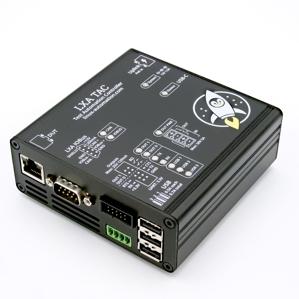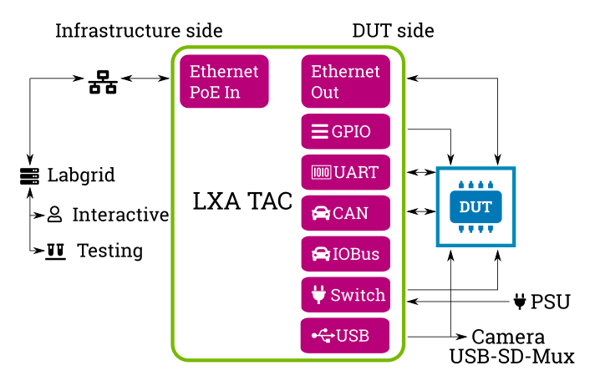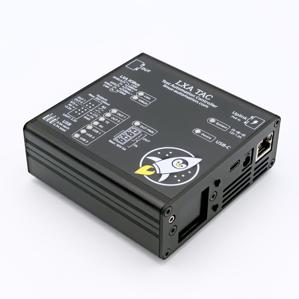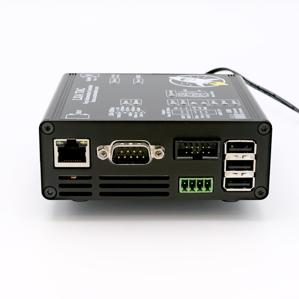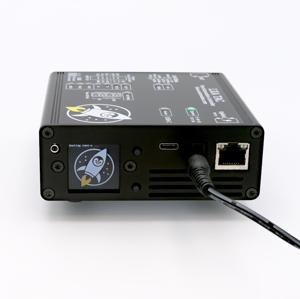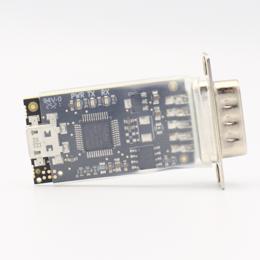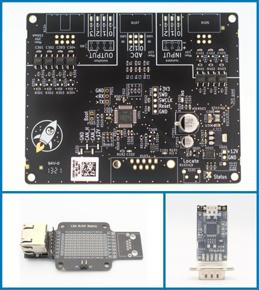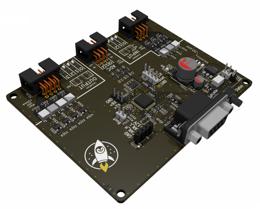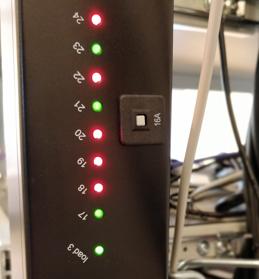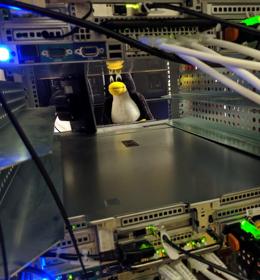Linux Automation Test Automation Controller: A one Device labgrid Exporter
Our subsidiary Linux Automation GmbH introduces the LXA TAC (Linux Automation Test Automation Controller): an all-in-one labgrid exporter. The LXA TAC offers the usual interfaces to control one or more embedded devices (DUTs, devices under test) interactively or automatically with labgrid.
Devices with embedded Linux are designed to interact with the real world. So, during development we need to interact with physical devices and their interfaces. The LXA TAC is an all-in-one device that allows to control the interfaces needed for embedded development remotely. The LXA TAC is designed for use with labgrid. labgrid allows devices with embedded Linux to be remotely controlled interactively or fully automatically.
Functions of the LXA TAC
The LXA TAC serves as an interface between the IT infrastructure on the one side and the DUT on the other side:
The LXA TAC is controlled and powered via Ethernet. Apart from Ethernet, there is only a power supply for the DUT needed. This makes the LXA TAC the perfect labgrid exporter for the desk.
The LXA TAC provides the following features to remotely control a DUT:
- Switching the power supply of the DUT, including current and voltage measurement (up to 48 V / 5 A).
- 3.3 V UART to connect to the console of the DUT. (Level converters for RS-232 or 2.5 V / 1.8 V UART are available separately.)
- Two potential-free outputs for switching boot modes or simulating key presses.
- Three USB ports for extensions such as the USB-SD-Mux, Webcams or logic analyzers.
- CAN interface for CAN 2.0 or CAN-FD communication with the DUT.
- Separate Ethernet port for the DUT.
- USB device connection for implementing USB-gadgets to the DUT.
Even more details about the device can be found in the Datasheet.
Advantages of the LXA TAC
The LXA TAC has been created based on the experience of operating a heterogeneous embedded lab with over 120 DUTs at Pengutronix. The device therefore has many advantages over a simple, makeshift exporter. Listing them all would go beyond the scope here; so here are a few examples:
- The UART power supply and the UART logic signals can be completely deactivated. In this way, leakage currents that can prevent power cycling on particularly energy-saving DUTs can be prevented.
- The potential-free outputs include a voltage measurement. This means you can get feedback about the switching process even without direct access to the device.
- The power supply to the USB ports can be switched individually. This means misbehaving USB devices can be restarted remotely.
- The Linux system on the LXA TAC contains scripts that make setting up USB-gadgets easy.
In addition, the LXA TAC comes with an IOBus-interface. IOBus is a robust expansion interface that can be used to connect additional IOs or real-time measuring devices.
As a user interface, in addition to the intuitive LEDs, there is a display with buttons, as well as a modern web interface available.
As a commercially available device, the LXA TAC has, of course, been tested according to relevant EMC standards.
For easy integration, Runner for Github Actions and Gitlab Workflows are available on the LXA TAC. This means that the LXA TAC can be directly integrated into existing workflows. In the following video, Leonard shows how to continuously testing a BSP with Gitlab Workflows and the LXA TAC can be set up:
Software
The LXA TAC software follows our open source philosophy: All software components are open source! By using Yocto and its layering feature, it is possible to create your own BSP based on meta-lxatac and to still benefit from the regular updates from Linux Automation GmbH.
Of course, Linux runs on the LXA TAC itself. A login via SSH on the device is exactly one of the use cases. Just like starting a container with a normal Linux distribution.
Availability
The LXA TAC is now available in the Linux Automation Shop. As accessories there are various power supplies, but also RS-232 and UART level shifters available.
Further Readings
Pengutronix at Embedded World 2022
Welcome to our booth at the Embedded World 2022 in Nürnberg!
Did you know? Initializing CAN interfaces with systemd-networkd
End of January systemd 250 was added to Debian bullseye backports. With a lots of new features and fixes now comes the possibility to set the timing of CAN bus interfaces with systemd-networkd. In this blogpost I will take a look at why this helps us maintain our embedded Linux labs.
labgrid Tutorials
This week, we started our series of YouTube labgrid tutorials. In the next few weeks we will publish more video tutorials showing you labgrid's features and giving you handy tips and tricks.
Update of our Remotelab equipment
If it looks like an advertising blogpost, reads like an advertising blogpost ... it probably is an advertising blogpost! Nobody likes to read advertisements and we don't like to write them at all, but like all proud parents, we would like to show you the new products that our corporate subsidiary, Linux Automation GmbH, has freshly added to their store. With these new products we, and maybe soon you, will complete (y)our Remotelab infrastructure.
The LXA IOBus line of lab automation devices
I would like to present to you the LXA IOBus, a CAN-based ecosystem consisting of a protocol, a gateway server and new class of Linux Automation GmbH devices, including the Ethernet-Mux and the 4DO-3DI-3AI input/output board.
Showcase: Remote Working
Project work with our customers includes the handling of hardware prototypes. Since work is generally done in parallel, on many project for many customers, there is a constant flood of hardware prototypes accumulating on the desks of our developers. These accumulations of loose boards can become a problem. This is especially the case when a number of people work on a prototype. Another common annoyance occurs when a project has not been worked on for a period of time, as this might involve moving the hardware from one desk (or storage location) to another and setting it up again. Right now, in a situation where working from home is more common and relevant than ever, this has become even more of an issue. The distances between desks and storage locations of our developers are now measured in kilometers, rather than meters.
Showcase: Continuous Testing
About 70,000 patches go into the Linux kernel every year, and many of them are bug fixes. The same applies to most other open source projects that are part of a modern Linux system. In order to benefit from the work in the community, the sensible strategy is to constantly update to the latest software version and keep the system up to date. Of course, with this amount of changes, new bugs can be added or incompatibilities can arise.
Pengutronix at FOSDEM 2021
"FOSDEM is a free event for software developers to meet, share ideas and collaborate. Every year, thousands of developers of free and open source software from all over the world gather at the event in Brussels. In 2021, they will gather online." -- FOSDEM


